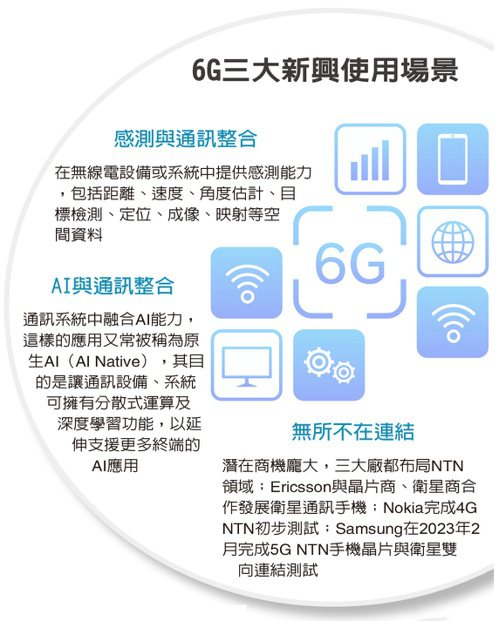Countries and telecom giants around the world have begun to compete fiercely. According to media reports, the International Telecommunication Union (ITU), as the organization that has long formulated mobile communication standards, released the "6G Vision" report in June 2023, which identified six new capabilities of 6G, including coverage, sensing capability, AI capability, sustainability, interoperability and positioning accuracy. Since then, the ITU has released more detailed information in early December 2023, further planning the development direction of 6G.
6G presents three unique emerging use cases, namely "integration of sensing and communication", "integration of AI and communication", and "ubiquitous connectivity". These scenarios have derived a variety of application cases, and national alliance organizations and communication manufacturers have actively invested in research and development, competing to seize the commanding heights of 6G development to ensure the huge interests behind it.

In terms of international alliances, the US-led Next G Alliance (NGA), the European and China-focused One6G, and Japan's Beyond 5G Promotion Consortium (B5GPC) are significant contributors. However, 6G's huge investment and high risk of telecom equipment under geopolitical risks make it necessary for companies to make careful decisions when considering factors such as geopolitics, revenue and surplus, R&D share and expense in this new generation communication war, especially in the context of US-China rivalry. At present, Ericsson, Nokia and Samsung three heavyweight manufacturers become the focus of analysis.
The "sensing and Communication integration" scenario focuses on radio devices or systems that provide sensing capabilities, including the provision of spatial data such as distance, speed, Angle estimation, target detection, positioning, and imaging. Typical applications include navigation, motion detection, motion tracking, and the provision of ambient sensing data and information for applications such as AI and digital twins. Applications in this scenario focus on precise positioning of machinery or robots and fully autonomous driving applications, as well as V2V communications.
In terms of telecommunications equipment manufacturers, Nokia has actively invested in the field of intelligent manufacturing, demonstrating a prototype of the "sixth sense" for radio identification of the human body. Ericsson is working with NXP to explore applications in the transportation and factory sectors. In addition, the three international alliances pay attention to the integration of AI capabilities in communication systems in the "integration of AI and communication" scenario, with the goal of enabling communication equipment and systems to have decentralized computing and deep learning functions to support more terminal AI applications.
In the "ubiquitous connectivity" scenario, 6G aims to provide mobile communication services in multiple domains such as land, sea and air, reducing the digital gap in remote areas. The application cases proposed by the three international alliances are mainly concentrated in the agriculture, forestry, fishery and animal husbandry industries, such as intelligent agriculture, remote monitoring and management, and vehicle-to-vehicle connectivity. This presents a huge opportunity for telecom equipment vendors, so Ericsson, Nokia and Samsung are all positioning themselves in the non-terrestrial network (NTN) space, seeking to take the lead in this potential growth area.
In general, the past 4G and 5G have limitations in all-round coverage, while 6G is committed to achieving "ubiquitous connectivity", making the ground network and non-ground network gradually integrated. The emerging applications of 6G in the future are mainly concentrated in the fields of production and manufacturing, transportation, agriculture, forestry, fishery and animal husbandry. Taiwan is strong in the field of manufacturing, especially in intelligent manufacturing, and the current 5G application has laid the foundation, and it is expected to continue its advantages in this field in the future. With the gradual development of 6G, countries and enterprises will usher in new opportunities and challenges.
* Disclaimer: The content of this article is from the Internet, if there is any dispute, please contact customer service.



